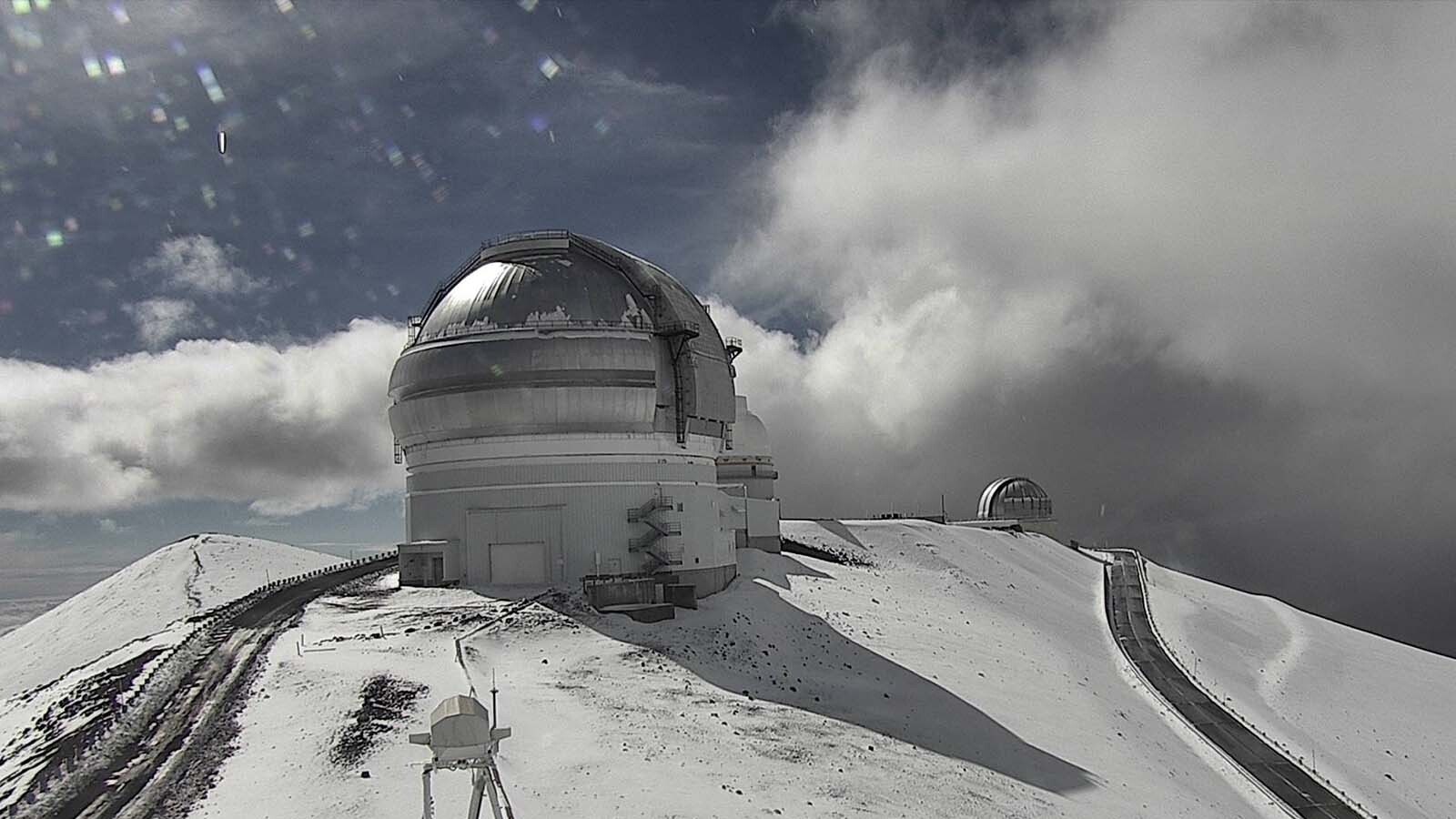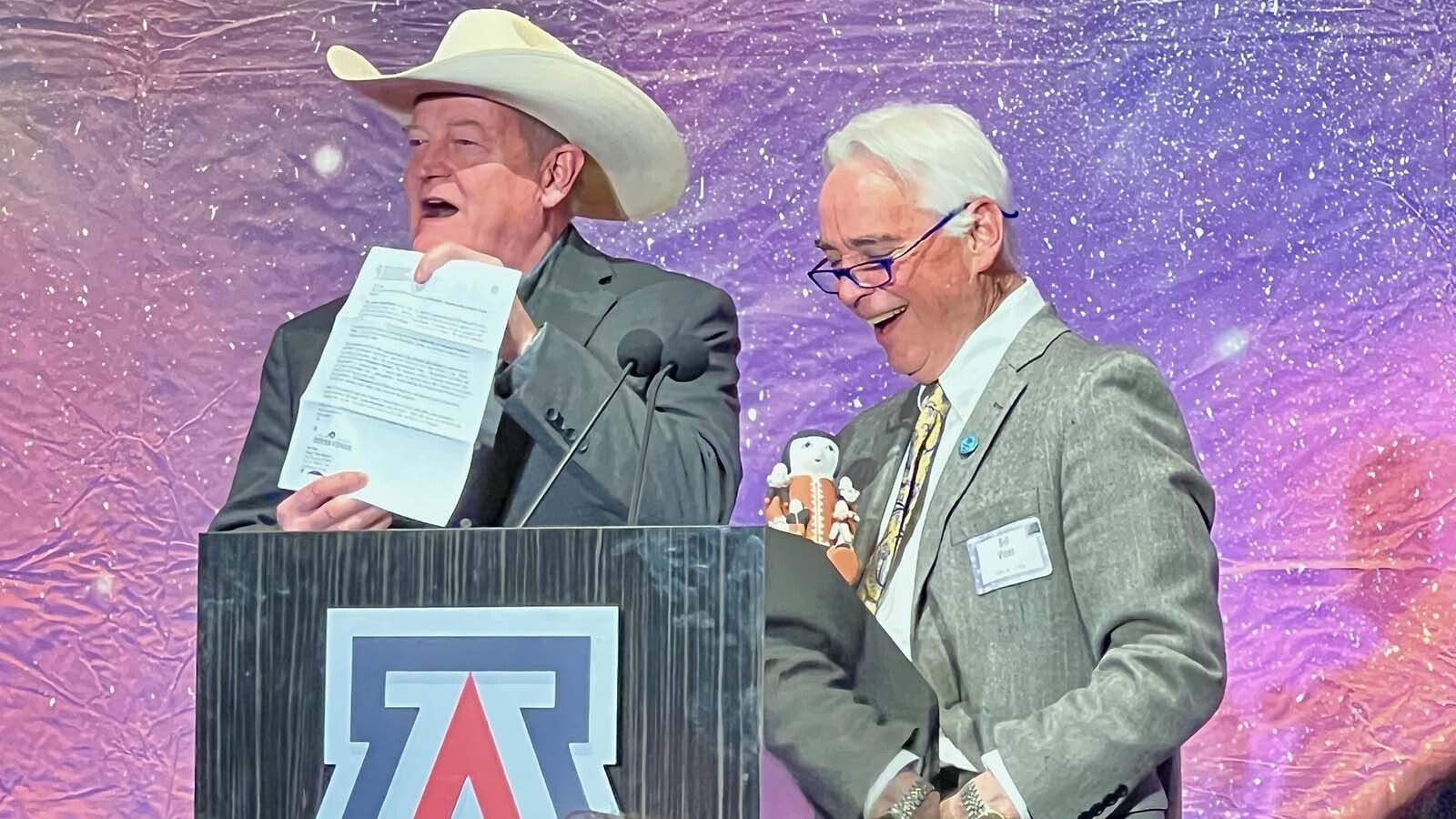CHEYENNE — Before the Hitching Post became Cheyenne’s unofficial second state capitol — where most legislators would hobnob over drinks and dinner, sometimes working out their differences at all hours — there was the Rollins House on present-day 16th Street.
Now it’s a boring parking garage.
It’s like the song where they paved paradise to put up a parking lot. The history of the Rollins House is a bit more twisting and turning than that, but in its day, it was a paradise in the “hell on wheels” tent city that Cheyenne began as.
“Hell on wheels” was used to describe railroad towns of the day that were comprised of one part railroad workers and two parts saloon keepers, gamblers, prostitutes and other hangers on. There were also merchants of all stripes, some of them more and less dishonest than others.
Cheyenne though, was going to be different, its residents believed. Cheyenne was the Magic City of the Plains, and it was going to be the next Chicago, maybe even home to the next Capitol of the United States.
It became known as the Magic City because of how quickly it arose from the prairie dust to the sky. And the Rollins House was one of its most fabulous and famous early hotels.
“So much so, that people who were trying to give other people directions would say things like, ‘Two doors down from the Rollins House, or across the street from the Rollins House,’” Cheyenne Frontier Days Old West Associate Director/Curator Mike Kassel told Cowboy State Daily. “So, it was just huge. And it was a landmark.”
Pop-Up City
Cheyenne grew so quickly, it’s fair to describe it as a pop-up city.
“Houses came by the hundreds from Chicago, readymade,” wrote an astonished French tourist of the time named Louise Laurent Simonin. “In Chicago, they make houses to order, as in Paris they make clothes to order.”
Other pre-existing structures came in as well from Julesburg, which was the previous temporary, end-of-track headquarters. Now it was time to stand up the next end-of-track headquarters in Cheyenne, in what was then still in the Dakota Territory.
Around the headquarters, these end-of-track towns sprang up overnight. Many of them would vanish almost as quickly once it was time to move on to the next stop down the line, their buildings and tents all taken by train to their new homes.
Among the scavenged Julesburg buildings was one that would become the shoe store of prominent merchant Stephen Bon, serving him for a decade.
“Everywhere I hear the noise of the saw and the hammer,” Simonin wrote. “Everywhere wooden houses are going up; everywhere streets are being laid out.”
There were even houses traveling down the street — with occupants still inside.
“You can see the sheet-iron chimney smoking while the house moves along,” Simonin wrote.
Dodging The Dodge House
Simonin’s visit to Cheyenne was November 1867.
At the time, there were few lodging choices, all of them a bit dodgy. One of them, the place where Simonin stayed, was even called The Dodge House.
It had a common sleeping room with 30 beds, many of which were occupied by two sleepers at a time. There was a common lounging room as well where everyone cleaned up.
According to Simonin, he had to share the same brushes, the same combs, and even the same towel as the other guests.
“I rolled the soiled linen, spotted with dingy stains, until I found a clean place, and then bravely rubbed my face,” he wrote.
But the Rollins House was not long in coming to save tourists like Simonin from such terrible accommodations.
Construction of the three-story hotel began in November 1867, that same month when the Frenchman visited. The hotel was to measure 132 feet by 132 feet and would have individual rooms for up to 200 guests.
It’s owner, J.Q.A. Rollins, advertised his “new and commodious” hotel as the “Only First-Class House in the City” once it opened.
At the time, early Cheyenne did not have running water, but The Rollins House offered its own bath house — quite the luxury for the time.
“What was cool about the building was its combination of storefronts for businesses, and then rooms,” Kassel said. “I think every time they did some expansion, they kept adding rooms.”
It quickly became the place where people liked to do their business.
“We had doctors with offices there,” Kassel said. “Dentists who had offices there. Tobacconists, liquor stores, barbers. They had a lunch counter or cafeteria inside the building. There was just so much going on at a certain level, and then offices everywhere throughout the building.”

From Boom To Bust
The Rollins house was one of the first and largest buildings in Cheyenne. And Rollins was a well-known figure who’d made a fortune from his silver mines in Colorado.
“The town of Rollinsville, Colorado, was named after him,” Kassel told Cowboy State Daily. “So, he had a lot of money, and he was well-known in Colorado, and then came up here to do business.”
Kassel believes it likely Rollins would have hired a manager for the hotel rather than manage its day-to-day operations himself.
Hard times were coming for all of these hopeful Cheyenne businesses that had come to be part of the economic wizardry they believed was happening in this Magic City on The Plains.
The Union Pacific was in the race of its life with the Central Pacific. The two companies had been directed by Congress to meet somewhere in the middle of the United States. Whichever of the two companies laid the most track would get the largest paycheck.
For that reason, Union Pacific could not afford another winter in Cheyenne. It rolled up its temporary Cheyenne headquarters in 1868, barely a year after it had arrived, moving downline to the next end-of-track, in Laramie.
With Union Pacific went not only workers, but saloon operators, brothels, gamblers, merchants and many other professionals. The Cheyenne boomtown that had numbered nearly 10,000 people by one newspaper’s estimate in 1867 was suddenly down to more like 1,500 people, based on the 1870 census.
That was still a sizable number, but nothing like before. And not nearly enough to support all the businesses that remained.
For those who stayed behind betting on Cheyenne, it was a bust. Businesses scrambled to stay afloat. Some didn’t make it and were sold at auction, while others stayed alive by slashing rates and diversifying.
The Rollins House remodeled, selling barroom fixtures as well as bedroom furniture and mattresses. Some of its rooms were then converted into stores and offices.
Women’s Suffrage Likely Debated There
The Rollins House was among the businesses that survived the bust.
“By the time we had the first Wyoming territorial legislature, (Rollins House) is where most of the legislators had their private offices so they could conduct business,” Kassel said.
That included one William H. Bright, president of the Wyoming First Territorial Council, the forerunner of the Wyoming Legislature.
“He’s also the man who submitted the bill to give women the right to vote,” Kassel said. “And then, his main opponent for women’s suffrage, who was also from South Pass City, was a man by the name of Benjamin Sheets. And he had his office in that building as well.”
The Female Suffrage Bill would be the Wyoming Territorial Assembly’s first, most notable legislation.
Not much is known about their personal interactions in the Rollins House regarding that bill, Kassel said.
“But you know these guys had to talk,” Kassel said. “They were both from South Pass City, so they talked. And one was for women’s suffrage, and one was the main opponent against it. So, it had to be a lively place from time to time.”
Gov. John Allen Campbell would sign the Female Suffrage Bill into law on the last day of the session, Dec. 10, 1869, and women would cast their first votes in America in Wyoming in 1870. And Rollins House would continue to be the center of a lot of legislative business and the state’s earliest history until the Capitol was completed.
“At least for the first couple of years that we had the Wyoming Territory Legislature, that’s what this building was used for,” he said. “It was their (legislators) offices.”
Associations also met there, Kassel said, like the Rocky Mountain Wool Growers Association and the YMCA.
“For like the first 10 years, it was the place to go,” Kassel said. “It was the best-appointed hotel. It was the place that people would send friends and family. This is where the creme de la creme, if they weren’t staying with people individually, would stay.”
Surviving A Huge Fire, Barely
On the corner of 16th Street and Eddy, not too far away from the Rollins House, was the T.A. Kent Liquor Store, just one of the many merchants in that area. But on a windy winter day, Jan. 11, 1870, a fire broke out in a defective flue.
It was a Tuesday, so there were hundreds of people shopping in the street, according to reports from Cheyenne’s newspaper of the day, the Daily Leader. They tried to help merchants, who lived above or behind their stores, save their belongings.
To no avail. They couldn’t get far enough fast enough to escape the hurricane of fire that was raging through that block. The fire destroyed 70-some businesses, many of them uninsured.
“The Gold Room and the Rollins House were badly scorched,” the Leader reported after the fire. “And the entire row of buildings on that side of 16th Street were more or less injured.”
Still, it could have been worse. The Ford House across the street from the Rollins House was destroyed, a loss of $30,000. The Star Brewery, worth $10,000, and the building that had served as the U.S. Courthouse were also both destroyed.
Damages for the Rollins House were reported as $500.
Temple of Fashion, next door to the Rollins House, also reported a $500 loss. The owner placed a tongue-in-cheek ad in the newspaper thanking those who had “saved” hats, feathers, flowers and other items from her store, but also asking them to “return the same.”
And At Last, A Dismal End
Not long after that 1870s fire, an editorial appeared in the Cheyenne Daily Leader urging that someone buy out the Rollins House, which had become something of an eyesore, and to give one part to the Masonic fraternity for a lodge, while creating a business block on the rest of the property.
Instead, a Mr. Geo. C. Leighton, former proprietor of the Planters’ House, leased the Rollins House, promising to renovate and return it to its former glory. Not much is known about the Planter’s House, but Leighton was described in a later article as an experienced hotelier.
He renamed the Rollins House the American House, and he seems to have made good on all those promises. A subsequent article printed by the Leader gushes about the new hotel.
“One would hardly recognize it, however, as the Rollins House,” the article said. “Since the whole establishment has undergone a thorough overhauling and been put through a renovating process.”
The new hotel was to have 22 rooms with all new bedding and furniture, as well as a ladies’ parlor, once it opened, which the article said would happen soon, by the end of the week in which the article was published.
“The entire front of the building is to be painted, and a large sign, with gilt letters, will announce to the weary traveler where the American House can be found,” the article went on to say. “Mr. Leighton knows how to keep a hotel and will undoubtedly make his new house popular with the people.”
After Leighton retired, the hotel was taken over by “Messrs. Wenger Bros., former proprietors of the Western Hotel, and Mr. William Balderston,” the Leader reported.
It would change hands several times, keeping its name American House, until 1877, when a Messrs. D. Mainville and Briabin leased it. They renovated it and renamed it the Overland House, as there was another American House around the corner.
This was short-lived, however. The Masonic Lodge, which had long been considering buying the Rollins House for its lodge, purchased the lot in 1877.
Descent Into Debauchery
After that the Rollins House was either torn down, or it may have been moved to Cheyenne’s Red Light District, as mentioned in the book, “Cheyenne, A Biography of the ‘Magic City’ of the Plans,” by Bill O’Neal.
In it, he says the Cheyenne Daily Leader “derided” what it called a bagnio, “kept by some colored women in the old Rollins House building” in the vicinity of 18th Street, where the infamous “The Row” housed an array of so-called “sporting women.”
A bagnio is another name for a brothel, and sporting women were what prostitutes of the era were commonly called.
The Row, interestingly enough, was not far from what was known as “Church Corner” at 18th and Ferguson, so named because that is where the Baptist, Episcopalian and Presbyterian churches all stood. They were scandalized by what was taking place in The Row.
According to the Leader, drunken brawls were a “nightly occurrence” at the former Rollins House turned Bagnio. At least until the bartender was finally arrested and fined.
From there, mention of The Rollins house fades away into history, the final fate of the building unknown, while a parking lot has replaced what was once a Wild West paradise.
Whatever its end may be, it was still once part of a legend and once helped put some quality into the Equality State.
Renée Jean can be reached at renee@cowboystatedaily.com.







